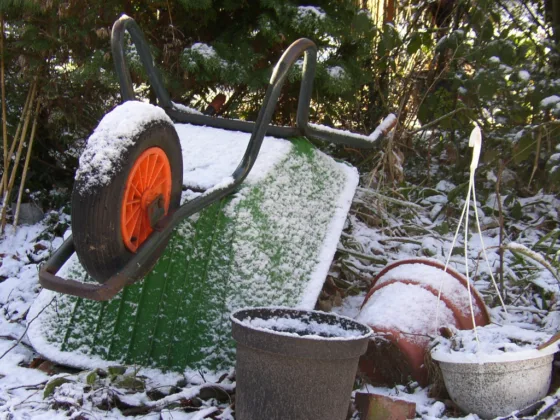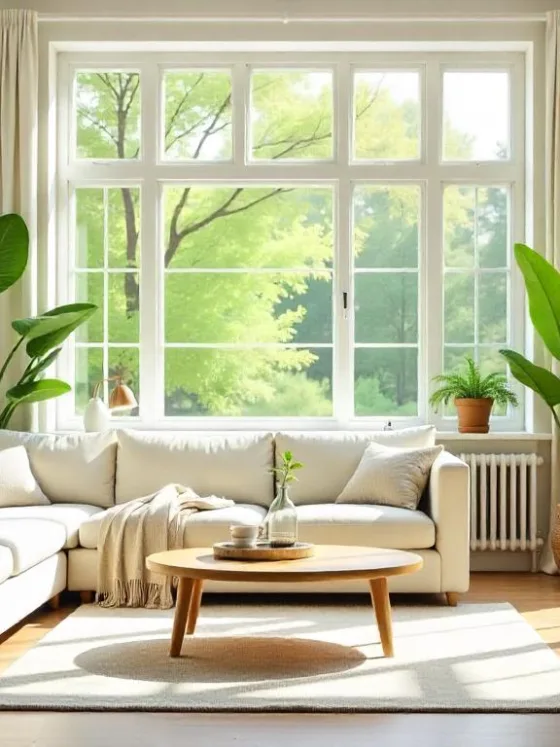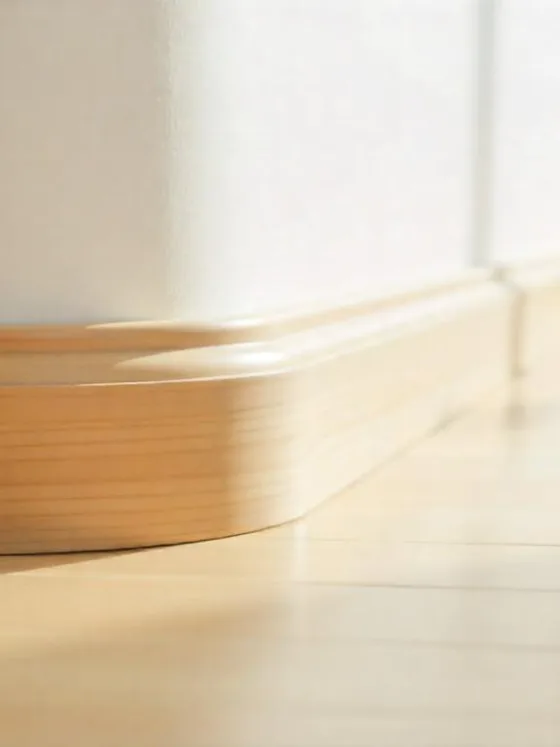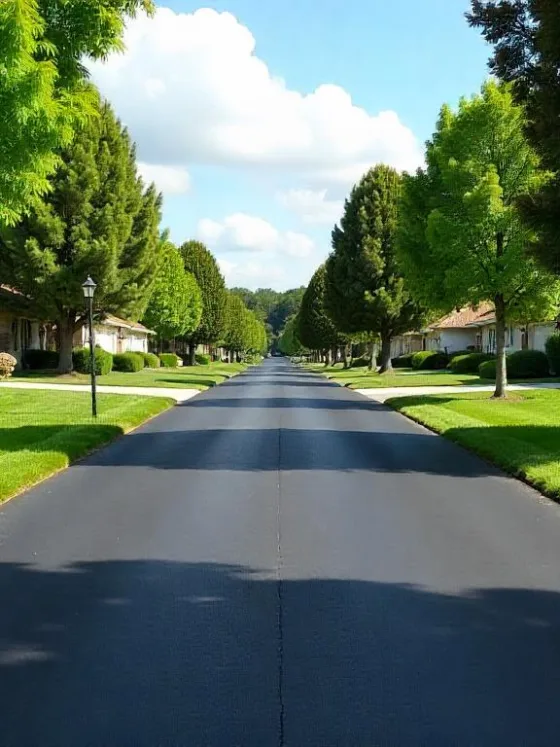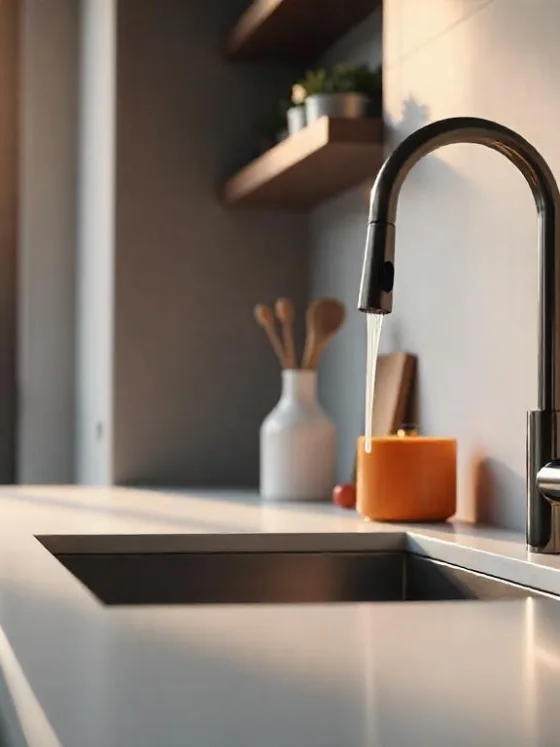Table of Contents Show
When gardeners think of hydrangeas, they often associate them with the deep South, the showy blue or pink mop-headed flowers boldly encircling the foundation of some lovely manor or estate.

The truth is, by no means are hydrangeas reserved for the South. There are many different species and varieties of these beautiful shrubs from Japan, and many of them can fit right into northern gardens and landscapes.
Don’t deny yourself the luxury of having at least one of these plants in your garden; these showy performers all bring a touch of panache in the heat of summer through to fall at a time when most other shrubs are finished strutting their stuff.
Landscape Uses
I have heard of hydrangeas referred to as “monstrosities in the landscape” by some. It is true that they are generally a coarse plant, particularly when they bloom with very large flower heads and in winter when their bare branches can be somewhat rangy and “clubby”.
However, as with any plant, the key to using hydrangeas in a garden or landscape is to understand their traits before you plant them and to work with them rather than use them indiscriminately.
Furthermore, some varieties are more coarse than others, and many newer introductions aren’t coarse at all!

From a designer’s perspective, the two key landscape attributes are the general coarseness all year round, and the showy flowers in mid-summer, when most other shrubs have finished their blooming.
Besides meeting their growing preferences, when looking to site hydrangeas, plan to put them in a location where their coarseness works to your advantage.
For example, they are showy even from a distance, so plant them in a garden that can be viewed by passersby from the road.
In general, they should be used in mixed gardens with other shrubs and flowers rather than as solitary accent plants, but there are notable exceptions to this rule.
Read Also:
Planting and Care
Hydrangeas are generally quite easy to grow. They will thrive in many diverse conditions, however, my caution to northerners is to give them the best chance to handle our northern winters by recreating their preferred living conditions.
That means rich, organic soil that is well drained (definitely no standing water) and which is preferably slightly acidic. You can accomplish this by preparing the planting site with lots of organic matter and peat moss before you plant.
They are heavy consumers of water and should be watered regularly, particularly during dry spells. However, they will drown in standing water, so be sure that water doesn’t accumulate around their roots.
You may fertilize them to encourage the showiest blooms, but I find it isn’t necessary. If you do choose to boost them with fertilizer, discontinue the fertilizing after the end of July to allow the plants adequate time to harden for the coming winter.
One good thing about hydrangeas is that they will tolerate shade, even deep shade. Having said this, I recommend partial shade at most, either filtered light, morning or afternoon sun.
When planted in full shade, they become spindly and leggy, and the flowers become smaller. They will definitely grow in full sun, although in full sun, they will require almost constant watering, especially the bigleaf varieties.
Species and Varieties
Here are the most common “garden variety” hydrangeas that you might find in your local northern nursery;
Smooth Hydrangea (Hydrangea arborescens)
This species is almost always represented in the landscape by the cultivar “Annabelle”, and with good reason. The species itself is extremely scrubby looking and has poor flower quality.
On the other hand, “Annabelle” is more upright and bold than the species, to say nothing of its flowers. The flowers are enormous round balls of pure white, as big as 12 to 18” in diameter, and they are fully sterile, meaning that they do not produce seeds, only flowers.
In fact, Annabelle is so different from the species that you would find it hard to believe that they are one and the same!

Smooth hydrangeas are best used in groups of 3 or more, like a perennial, for maximum effect. They should be used in a garden application, such as along a driveway, in foundation plantings, or in a mixed border.
They should never be used as solitary accent plants for the same reason that perennials tend not to make good accents.
This is the hardest of all the garden hydrangea species. From my experience, smooth hydrangea is in fact hardy only to zone 4 (the books will either say zone 3 or zone 4).
Yet, it is a useful plant right down to zone 2! Why, you might ask? Well, savvy gardeners know that smooth hydrangea is best treated as a perennial, by pruning it down to the ground each spring, regardless of your hardiness zone or whether or not the branches survived the winter.
When treated in this manner, this plant responds by becoming a 2-3’ upright shrub topped with gigantic balls of flowers from June through August. The secret to its success is that smooth hydrangea blooms on new wood.
This means that its branches and flower buds don’t have to make it through the winter to put on a great performance the next summer, only the crown.
So, as long as you can be assured of reasonable snow cover every year, by all means, give this hydrangea a try anywhere in the North!
Panicle (“PeeGee”) Hydrangea (Hydrangea paniculata)
Again, this species is most often represented by its cultivars, most notably the famous “PeeGee” hydrangea. For the curious, “PeeGee” represents the initials of its Latin name “Hydrangea paniculata ‘Grandiflora’”.
Like smooth hydrangea, the species itself is not used in landscaping as the cultivars tend to have far more ornamental characteristics.
As with the above hydrangea, PeeGee tends to flower on both new and old wood. Unlike the above hydrangea, though, PeeGee should not be pruned to the ground each spring and is best left to grow as a woody shrub.
In the far north of its range (zones 3 and 4), it will occasionally suffer some degree of dieback in colder winters, keeping it a compact 3-5’ shrub. To the south (zone 5+), it tends to grow taller and more treelike (greater than 10’).
Keep this in mind when planting; in the North, it can be handled as a garden shrub, while further south it becomes useful as an accent plant.

The flowers of this hydrangea are interesting, to say the least! They are generally large, elongated (cone-shaped) panicles at the terminal ends of the branches, tending to droop for a most interesting overall effect.
They are quite large (more than 12” long), and if the branch ends are lightly pruned in early spring, can grow even longer! Their color habits are most interesting as well.
The flowers start out a lime green in mid-summer, gradually turning pure white in August, and then developing a rose pink coloration by early fall, finally ending up an ugly brown in fall.
The entire performance can last a couple of months. If interest is important in a landscape, then this plant delivers!
There are many selected cultivars of panicle hydrangea, each with different characteristics.
Here are some of the key varieties and their respective differences from PeeGee;
Unique, Kyushu
While PeeGee has only the showy, sterile flowers, these two varieties are characterized by having a mix of sterile and less showy non-sterile flowers on the same flower heads. The result is a more graceful, delicate look, less coarse but also with less impact.
Tardiva
This variety is similar to Unique, but flowers about 2-3 weeks later. For this reason, it should not be used in the far north of its range, where frosts will kill the flowers before their performance is done.
Praecox
This is the opposite of Tardiva; it flowers about 2-3 weeks earlier than Unique. From my experience, it is also the hardest of the cultivars, so it is an excellent choice for zones 2 or 3.
Pink Diamond, Angel’s Blush
These two cultivars are characterized by having flowers that remain a deep ruby pink for a longer period than PeeGee, although they still go through the entire color shift.
White Moth
From what I have seen of this variety, it is a fuller, whiter variety than PeeGee, and tends to be less leggy. Allow it room to strut its stuff.
Oakleaf Hydrangea (Hydrangea quercifolia)
Here is an interesting native of the southern United States which is probably the boldest and coarsest of all the hydrangea species.
It suckers to form large clumps, which when combined with its very large, oak-like leaves (hence the common name) and very showy white flowers, makes it an excellent choice for large-scale mass plantings. Smaller cultivars exist which are more useful for the home landscape.
The white flowers are similar to PeeGee hydrangea, held in long panicles at the terminal branches over the middle of summer. They tend to be earlier than PeeGee, with the performance finished by August.

Hardiness is definitely a limiting factor with this plant. Experience shows it is vegetatively hardy to about zone 4, i.e. it will either die to the ground and grow back from the ground, like “Annabelle” above, or some leaf buds might actually survive and sprout new branches.
The problem is with the flower buds. This plant only flowers on old wood which has survived the winter. The breakpoint for this appears to be about zone 5, so I would only recommend it for zone 5 or higher.
Having said that, its foliage alone can make a bold statement in the landscape, so gardeners in Zone 4 may wish to try it on that basis alone. I don’t know of anyone who has been successful with this plant in zone 3 or colder.
There are some new cultivars of this species available;
Snow Queen
This cultivar was selected for its showier white panicles of flowers. I have seen it in bloom, and I was most impressed!
PeeWee
As its name implies, this is a smaller, more compact version of the species, with the same flowering attributes.
Bigleaf Hydrangea (Hydrangea macrophylla)
This is the “Deep South” hydrangea that northern gardeners really covet. The main difference from the other species is that this hydrangea blooms either hot pink or blue rather than white.
The main problem with this hydrangea is that it is far less hardy than the other species. You can generally think of it as hardiness zone 6 for reliable bloom.
This limitation arises from the fact that it blooms only on old wood which has survived the winter, and this is a very tender plant; it won’t make it through most northern winters.

Having said that, there is a good news story for northern gardeners and landscapers, which comes courtesy of the good people at Bailey Nurseries, a major plant grower in St. Paul, Minnesota.
They discovered an unusually hardy plant growing in St. Paul of all places, a secure zone 4 location. Not only was the plant thriving, but it was blooming consistently every year!
The secret, as they discovered, was that unlike the species and virtually every other cultivar on the market, this plant seemed to flower on both old and new wood.
So, even if the flower buds died over winter, it would still produce an abundance of flowers the next summer!
Bailey has introduced the plant as “Endless Summer”. It is just starting to make its market presence felt around the North and will be found in more and more yards and gardens with time.
It is “officially” rated to zone 4. However, being the curious northern gardener that I am, I have been very interested to see how it will perform in zone 3 or even colder.
Theoretically, if it blooms on new wood, then it should perform well if handled like the “Annabelle” hydrangea, even if it dies to the ground each winter.
I have been trying a couple this year in my zone 3 garden, and have coordinated a trial of at least 9 plants in gardens around my area. So far so good!


